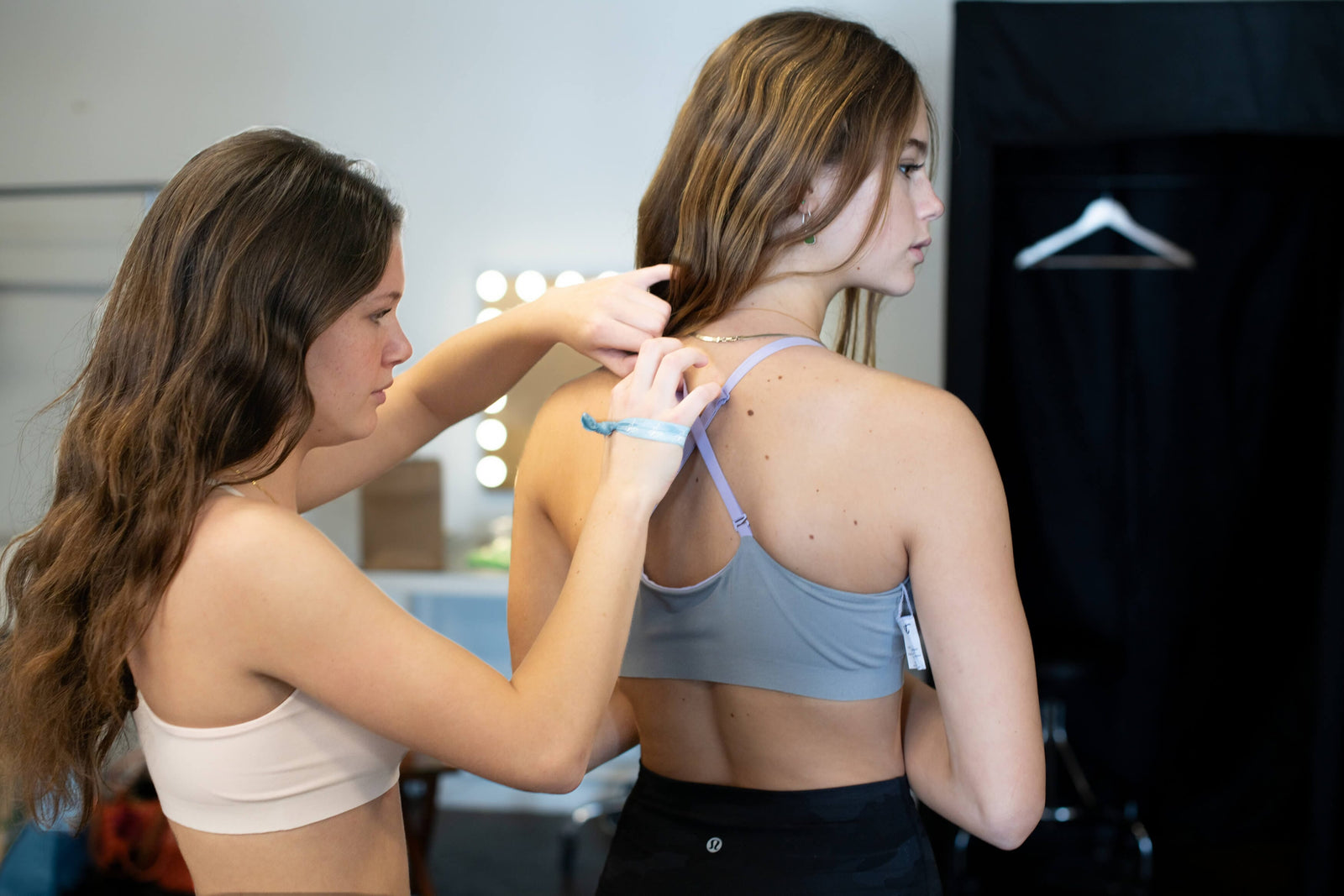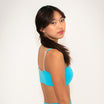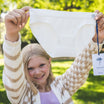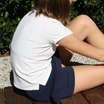First Puberty Signs No One Talks About

Puberty is a pivotal time in a young girl’s life, marking the transition from childhood to adolescence. Whether you’re a parent or guardian trying to guide your daughter through this significant time or a young girl starting to notice these changes yourself, understanding the first signs of puberty is crucial and can help ease any worries.
In this article, we’ll explore when does puberty start for girls, including physical and emotional changes, and how to navigate this momentous time. We then explain how our high-quality undergarments at Bleuet are the perfect clothing option for young girls as they go through puberty. Let’s get started!
What Are the First Signs of Puberty in a Girl?
The first signs of puberty in girls typically include breast development, the growth of body hair, and vaginal discharge. But when does puberty start for girls? These changes usually begin between ages eight and 13, signaling the start of adolescence. Factors such as genetics, nutrition, and overall health can influence the timing of these signs. We explore this in more detail below!
First Signs of Puberty: Physical Changes
As girls enter puberty, their bodies begin to change in ways that signal the start of their journey into adolescence. Recognizing these physical developments helps both parents and girls feel more prepared and confident during this important time. Let’s consider some of the first signs of puberty physically below.
The Appearance of Body Hair

An early and common first sign of puberty in girls is the appearance of body hair. Initially, fine, light hair may develop on the arms and legs, gradually becoming thicker and darker in areas such as the underarms and pubic region. While the onset and pattern of hair growth can differ for each girl, understanding that this is a natural part of growing up can help ease any concerns.
Tips on How to Cope With Body Hair:
- Consider different hair management options, such as shaving, waxing, or using depilatory creams, but remember that these choices are personal and should be made based on individual comfort.
- Maintain good hygiene practices, especially in areas with new hair growth, to prevent irritation.
- Use gentle, moisturizing skincare products to soothe any sensitivity, particularly if you choose to remove hair.
Breast Development
Breast development is often one of the earliest and most noticeable first signs of puberty. It usually starts with the formation of small, firm lumps called breast buds under the nipples. As the breast tissue continues to grow, you might notice some tenderness or sensitivity — this is a normal part of the process. It’s also common for breasts to develop at different rates, leading to temporary asymmetry.
Tips on How to Cope With Breast Development:
- Choose a well-fitted, comfortable bra that provides support as breast tissue develops. Bleuet is the perfect option for teen and tween undergarments, as our range is designed for young, changing bodies! Check out our other articles to discover when do girls need training bras. And, if you are a parent or guardian, you can also find answers to the commonly asked question, “When should my daughter start wearing a bra?”
- Understand that tenderness and asymmetry are common and are absolutely nothing to worry about.
- Keep the lines of communication open about any concerns or questions, helping to make this stage feel less confusing and more normal.
Acne and Oiliness

Another early sign that both girls and parents or guardians might notice is a change in skin texture, including increased oiliness and the onset of acne. Hormonal shifts during puberty can cause the skin’s oil glands to produce more sebum[1], leading to clogged pores and breakouts. These changes often affect the face, back, and chest and can be frustrating for young girls.
Managing these changes effectively starts with a consistent skincare routine. Understanding that acne is a common part of puberty can help relieve some of the stress associated with these changes.
Tips on How to Cope With Acne and Oiliness:
- Wash your face twice a day with a gentle cleanser designed for acne-prone skin to help manage oil and prevent clogged pores.
- Avoid picking or popping pimples, as this can lead to scarring.
- Use non-comedogenic skincare products that won’t clog pores, and consider using a light, oil-free moisturizer to keep the skin hydrated.
- If acne becomes severe, consult with a dermatologist for professional advice.
Vaginal Discharge
As girls begin to develop, they may notice vaginal discharge, which can be one of the subtle indicators that the body is preparing for menstruation. This discharge, which is typically clear or milky white, helps to keep the vagina clean and is a sign that hormones are becoming more active. For many, this can start about six to 12 months before their first period.
Discussing vaginal discharge openly can help remove any embarrassment, making it easier to understand that this is simply part of growing up and is one of the first signs of puberty.
Tips on How to Manage Vaginal Discharge:
- Wear breathable cotton underwear to promote comfort and reduce moisture buildup.
- Consider using panty liners if the discharge feels uncomfortable, but remember that it is a personal preference.
- Maintain daily hygiene by washing the vaginal area with water and mild soap, avoiding harsh or scented products.
The Start of Menstruation

The arrival of a girl’s first period is a key milestone in puberty, typically occurring about two years after the first signs of puberty in girls, such as breast development. Most girls get their first period between the ages of 10 and 16[2], though timing can vary. Preparing for menstruation involves understanding what it is — a natural process where the body sheds the lining of the uterus each month — and knowing how to manage it with the right supplies, such as pads or tampons.
For both girls and parents, approaching this event with candidness and preparation can make it a more positive experience. The first few cycles may be irregular, and that’s perfectly fine, but learning how to track them can help ease some of the uncertainty.
Tips on How to Prepare for the First Period:
- Keep a small kit with pads or tampons in your bag so you’re ready whenever it starts.
- Start tracking periods from the first one to notice patterns over time.
- Discuss different menstrual products and choose what feels most comfortable.
Growth Spurts and Changes in Body Shape
During puberty, girls often experience rapid growth spurts, which can result in significant height increases over a short time. Alongside this, body shape changes, such as hips widening and the waist becoming more defined. These developments can affect how girls feel about their bodies and their clothing choices.
Finding clothing that fits well and feels comfortable, such as our range at Bleuet, is important during this time, as it helps girls adapt to their new shape with confidence.
Tips on How to Cope With Growth Spurts and Body Shape Changes:
- Encourage body positivity by focusing on what makes girls feel good in their clothing.
- Parents can help by ensuring clothes are well-fitting and adaptable as girls continue to grow.
Body Odor and Sweating

As the first signs of puberty emerge, one noticeable change is the increase in sweating and the development of body odor. This is caused by the activation of sweat glands, particularly in the underarms and groin, which can lead to stronger odors than before. These shifts can be surprising but are typical as the body matures. Introducing simple hygiene routines early on can help young girls manage sweating and any associated odors effectively.
Tips on Managing Body Odor and Sweating:
- Take regular showers, especially after sports or physical activity.
- Opt for deodorants or antiperspirants to help control odor.
- Choose lightweight, breathable fabrics to keep skin cool and dry. At Bleuet, our undergarments are designed in moisture-wicking and breathable fabric for enhanced comfort.
Voice Changes
While not as noticeable as in boys, girls may experience subtle changes in the tone of their voices during puberty. These shifts are usually mild, with the voice becoming slightly deeper or more mature. It’s a gradual adjustment and often happens without much discomfort involved.
Tips on Managing Voice Changes:
- Openly discuss any concerns or questions, reassuring that everyone’s experience is different.
- Embrace the natural progression of voice changes as part of puberty’s overall development.
Emotional and Psychological Changes During Puberty

Puberty introduces a complex mix of emotional and psychological changes — on top of physical — that can impact how girls feel about themselves and their surroundings. These feelings are often influenced by fluctuating hormones, growing self-awareness, and shifting social dynamics. By acknowledging these changes, girls can better understand what’s happening to them, and parents or guardians can provide the support needed to navigate this important stage.
Dealing with Mood Swings
Mood swings are common during puberty, triggered by hormonal shifts that can cause girls to feel emotionally unsettled. One minute, they may feel happy; the next, frustrated or anxious. For young girls, learning relaxation techniques like deep breathing, journaling, or simply talking about their feelings can help ease these sudden changes in mood. Parents and guardians can offer reassurance by staying calm and helping girls process their emotions without pressure to always “fix” things.
Building Self-Esteem During Puberty
Puberty can challenge a girl’s self-esteem, especially as her body changes and she becomes more self-conscious. Whether it’s dealing with body image, peer comparisons, or societal standards, it’s easy to feel unsure. Building self-esteem means focusing on what makes her unique beyond appearance — her talents, interests, and strengths. Parents, guardians, and girls themselves can work together to set positive boundaries around social media use and actively encourage a healthy, balanced self-image.
Navigating Friendships and Social Changes
Social dynamics often change during puberty, and girls might find themselves facing changing friendships, new cliques, or even romantic interests for the first time. It’s important for young girls to feel empowered to communicate openly with their friends and to seek out relationships that uplift them. Parents and guardians can be supportive by offering guidance and encouraging independence while also reassuring girls that it’s okay to move on from friendships that no longer feel right or beneficial.
What to Do if Puberty Starts Very Early or Late

While most girls begin to experience the first signs of puberty between ages eight and 13, some may start much earlier or later. Early puberty, known as precocious puberty, can occur before age eight, while delayed puberty might not begin until after age 14. In either case, it’s important for both girls and their parents or guardians to consult with a healthcare provider to ensure that development is progressing healthily.
If puberty starts too early, it can feel overwhelming for a girl who may not be ready for the changes. A doctor’s evaluation can help determine if intervention is necessary. For delayed puberty, seeking medical advice can help identify whether it’s simply a matter of timing or if further steps are needed. Understanding that every girl’s body develops at its own pace is crucial for easing any worries.
How Parents and Girls Can Work Together During Puberty

Puberty can be easier to navigate when parents, guardians, and girls work in tandem. Open communication, preparation, and mutual respect help ensure that everyone feels supported during this time of change:
Choosing the Right Apparel During Puberty: How Bleuet Can Help

Puberty is an important milestone in every girl’s life, and with it comes the need for appropriate clothing that supports her changing body. As girls experience the first signs of puberty, like breast development, it’s essential to provide them with comfortable, well-fitting undergarments. That’s where Bleuet steps in. We believe that growing girls deserve bras and underwear that are designed for their unique needs — comfort, support, and confidence.
Here’s why Bleuet is the perfect choice for young girls going through puberty:
- Comfortable and Age-Appropriate Bras: Our bras are specifically created for tweens and teens, featuring ultra-soft, seamless designs that are tag-free and reversible. No unnecessary frills — just simple, comfortable designs made with young girls in mind.
- Inclusive Sizing and Skin Tones: Every girl’s body is different, which is why Bleuet offers a wide range of sizes from eight to 24. We also provide various skin-tone options so that every girl can feel confident in her own skin, regardless of her complexion.
- Excellent Support: Our bras feature a comfort stretch band that stays in place all day. Whether she’s sitting in class or running around at practice, Bleuet bras provide the support she needs without rolling up or feeling restrictive.
- Breathable, Moisture-Wicking Fabrics: During puberty, body temperature and sweat levels can increase, which is why we use breathable, moisture-wicking fabrics to keep girls cool and dry throughout the day. Perfect for active lifestyles or just everyday wear.
- A Positive Milestone Experience: We make finding that first bra a fun and memorable event. With our special unboxing experience, Bleuet turns what could be a nerve-wracking moment into something exciting, making this milestone a positive and confidence-building experience.
- Educational Content: We provide education and insights through our blogs. So, whether you are a parent wondering how to explain puberty to a girl, or you are a tween curious about the stages of puberty girls, we have all the answers you need!
Bleuet is here to help girls feel supported — literally and figuratively — during this transitional phase of life. Whether you’re a parent or a young girl shopping for your first bra, Bleuet offers high-quality options that are designed for comfort and confidence. Explore our range today and discover why so many girls trust us as they navigate the journey through puberty!

First Signs of Puberty: Final Thoughts
Navigating the first signs of puberty is a significant moment for both girls and their parents or guardians. While the physical and emotional changes may seem daunting at first, it’s important to remember that puberty is a natural and positive part of growing up. Every girl’s experience is different, and there’s no “right” timeline for development. Open communication, patience, and support are key to ensuring this journey feels less overwhelming and more empowering for both girls and their families.
FAQs
What are the first 5 signs of puberty?
The first signs of puberty in girls include breast development, the growth of body hair, vaginal discharge, increased sweating and body odor, and changes in skin texture, such as acne and oiliness. These are just a few of the many changes that mark the start of puberty.
What usually happens first in puberty?
The first noticeable sign of puberty in girls is often breast development, which starts with the formation of breast buds under the nipples.
What age is puberty earliest?
Puberty can start before age eight, which is considered early and known as precocious puberty. If puberty begins this early, it’s important to consult a healthcare provider.
How do I know if my child has early puberty?
Signs of early puberty include the development of breasts, body hair growth, and other physical changes occurring before age eight. Consulting a healthcare provider can help confirm early puberty and determine if any intervention is needed.
References
[1] https://www.webmd.com/skin-problems-and-treatments/acne/what-is-acne









Leave a comment